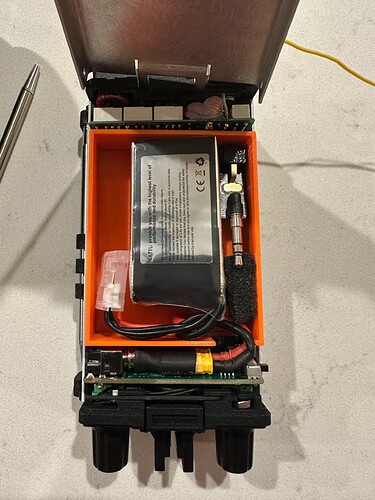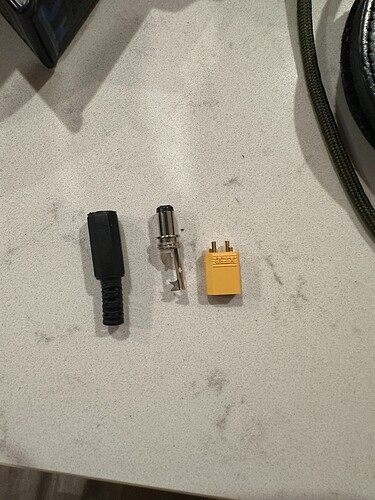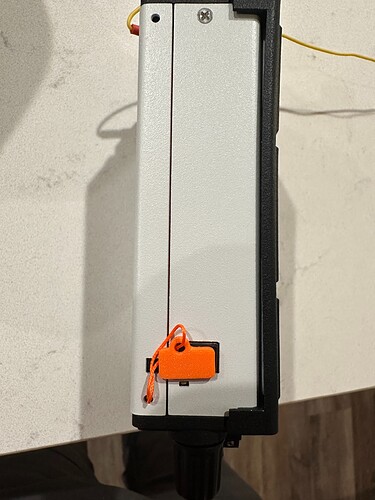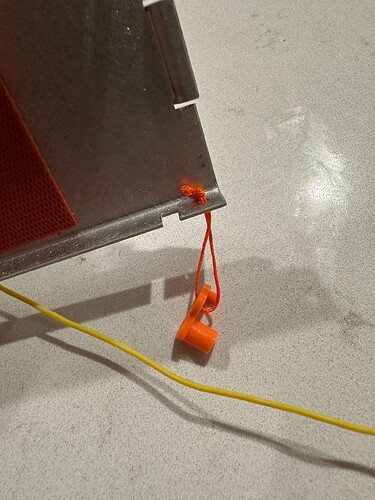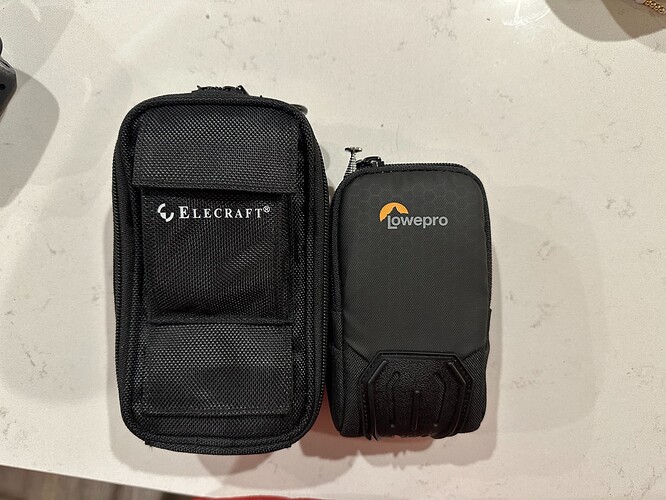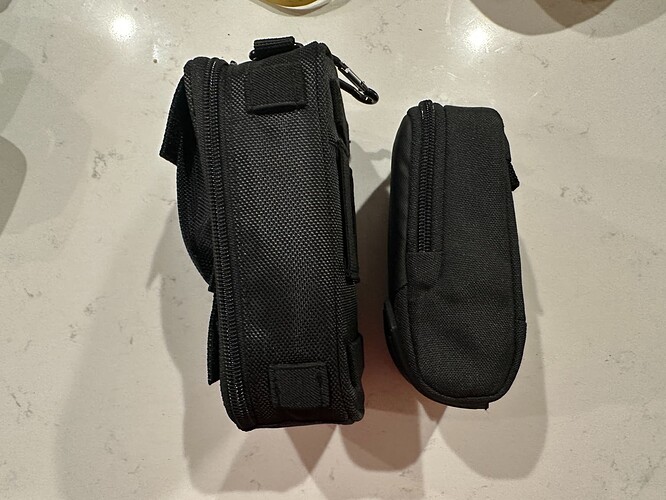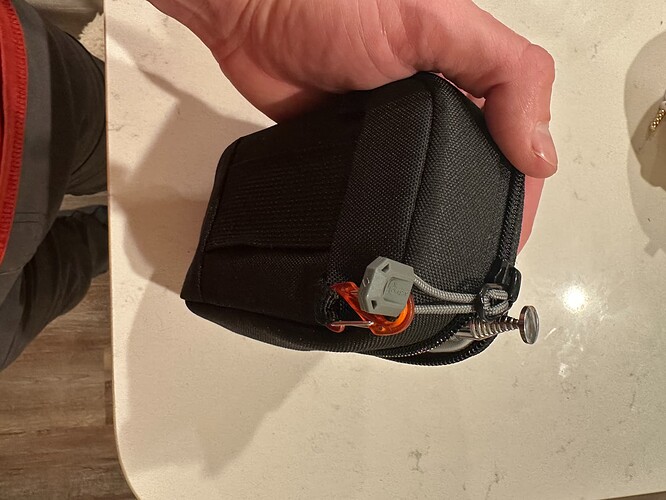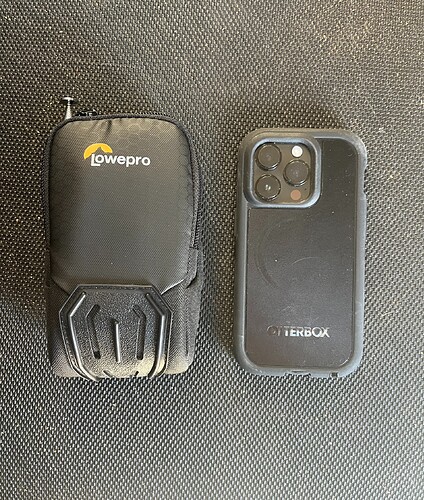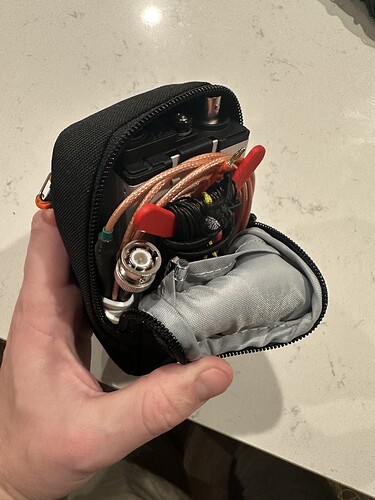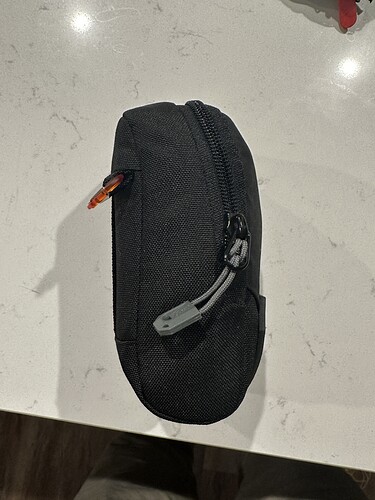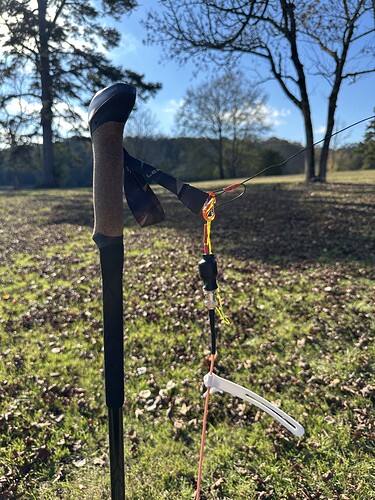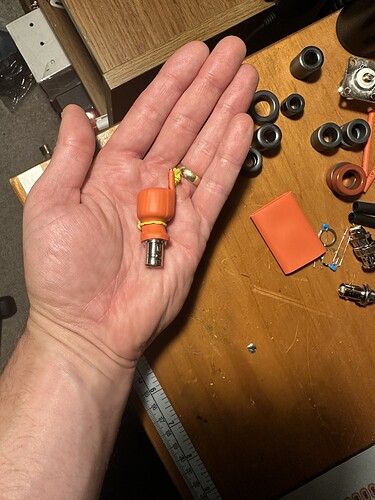A different thread about the KH-1 motivated me to post a quick write-up on the small modifications I’ve done to my KH-1 as a system to further reduce the weight of the transceiver and/or improve functionality.
It’s in part because I’m excited to have the rig home again- it was repaired by the manufacturer related to the same thing it seems like all of us with the radio eventually experience- toroids rubbing against the case of the transceiver causing SWR/ TX-out/ RX-in issues (you may notice in one of the following pictures that they slightly moved one of the toroids and applied even more silicone goop- frankly a bandaid solution in my opinion).
One would likely (and justifiably) ask why I would further reduce the weight of the package when it’s already one of the lightest transceivers on the market, and the answer is simple- we take it up hills. In a past life I was an ultralight backpacker- meaning my base pack weight excluding worn clothing and consumable items is 10lbs or less. After doing a lot of very lengthy day hikes (up to 17 miles) in the past year, all for the purpose of SOTA, I proposed and was granted permission from the Mrs to occasionally spend the night in the mountains again as I used to in years gone by. With minor adjustments, I’m again at a pack weight under 10lbs (excluding water/food/fuel and worn clothing) in part due to some of the following tricks I took advantage of.
-
The pen. I like to log with pencils so I bought a Zebra Micro mechanical pencil from Amazon. It’s the exact same size and form factor as the pen, so I rely on the pencil and keep the pen in the bag as a backup.
-
The battery. After chatting with N6MTB and reading some other accounts of users here, I purchased a 650mah battery from Amazon (tattu brand) and built an adapter using a barrel connector and an XT30 male connector. I trimmed down the prong on the barrel connector to reduce length, and soldered them together. I placed it into a 3d printed tray that replaced the void previously filled by the huge OEM battery. I can now carry my backup N6ARA tiny paddle inside the radio, along with a little piece of foam to keep things from rattling around as much. This reduced the weight of the unit overall by 76g, and it is shocking how differently the rig feels in hand. Thank you N6MTB for the help and inspiration.
-
The paddle magnet mod. I saw some videos posted by N7KOM and chatted with K7GUD about this one. I finally got around to doing the mod, and I feel it does improve the feel of the paddle, though it is still ultimately a compromise of performance for convenience. I used it for two brief activations on 1 Jan during the solar storm with good result- I still need to get used to the feel though as I experienced a few surprise characters while trying to call CQ. Thank you again to K7GUD for your help with this.
-
The Counterpoise. Rather than continuing to use the overbuilt counterpoise, I replaced it with a 13’ length of 28ga silicone wire from BNTechgo on Amazon. It winds up smaller, is infinitely more pliable/workable, and weighs 10g less. I used yellow since it is more hi-viz.
-
The power switch cover. I’ve read too many accounts of people accidentally turning their rig on while packing the radio at home, only to arrive at the summit with a dead battery. I initially tried the Tufteln switch guard but found it too spartan for my taste. It was bulky and made turning the radio on a little annoying. Talking with N6MTB, I learned about the 3d printed open source switch cover that plugs into the charging port for security. I love this solution, it’s very low profile, lightweight, and doesn’t make turning the radio on/off harder, you just unplug the guard and power on.
-
The padded case. Since I am placing this in a rucksack, I wanted to keep some type of protective case but reduce the size since the factory included option is a little oversized unless you are also carrying coax and a big EFHW inside it. I replaced the Elecraft bag with a Lowepro Adventura CS20 III.
The Adventura CS20 weighs 80g less than the included bag, is much smaller, and conveniently has some reinforced protection where the key plugs into the radio on the bottom. This bag fits the KH-1 like a custom made glove (if you don’t use the whip). There is just enough space for 6’ of RG316 and my DIY EFHW’s I wind on Tufteln winders.
If bringing the whip instead, the bag can zip 2/3 shut until it reaches the protruding antenna. It is a tight fit as-is, but I used a tiny Nite-Ize plastic micro carabiner to secure the zipper toggle to the case, thus preventing the zipper from walking open.
The radio is still very well protected, and unless you are doing something reckless, you are extremely unlikely to cause damage to the small amount of whip poking out of the top. I also removed the whip clips provided by Elecraft and just keep the whip attached to the rig by wrapping my counterpoise wire and headphone wire around them.
I placed the radio in the case “backwards,” with the back of the radio facing me. I prefer the BNC jack to be on the right side of the bag away from the zipper that would otherwise rest against it.
After the modifications, the entire kit comes in at a scant 387g (13.65oz) including the protective case, spare pen, earbuds, and logging tray filled with paper. I can log better, and send better on it. It is a station ready to operate.
I hope this post helps someone if they are considering making any minor adjustments to their KH-1 kit.
